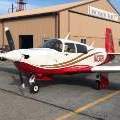Near Midair Close Call Video
-
Members Online
- BrianL29
- Logwes21
- Marc_B
- Will.iam
- exM20K
- GorkyPickeral
- Schllc
- midlifeflyer
- eman1200
- PeterRus
- varlajo
- N201MKTurbo
- TheAv8r
- Danb
- NicholasM20
- TangoTango
- LOCOLJ
- gkwasi
- kortopates
- rklems
- Cody Stallings
- 201guy
- Greg Ellis
- Shadrach
- stevesm20b
- Skates97
- pkellercfii
- hypertech
- Trenton W
- FTN Aviation
- IgorD
- MikeOH
- Bolter
- Utah20Gflyer


Recommended Posts